Are any of our locally found snake species likely to become rare and/or endangered?
Text and photographs Pat McKrill
To my knowledge there are fortunately only a few snakes that are termed ‘endangered’ in South Africa, the best known being the Gaboon adder (Bitis gabonica) and the Green mamba (Dendroaspis angusticeps) which occur in isolated areas on the upper eastern coastal fringes of KZN. The main reason for their demise would seem to be habitat destruction – perhaps a controllable factor if we could put our collective minds to addressing it.
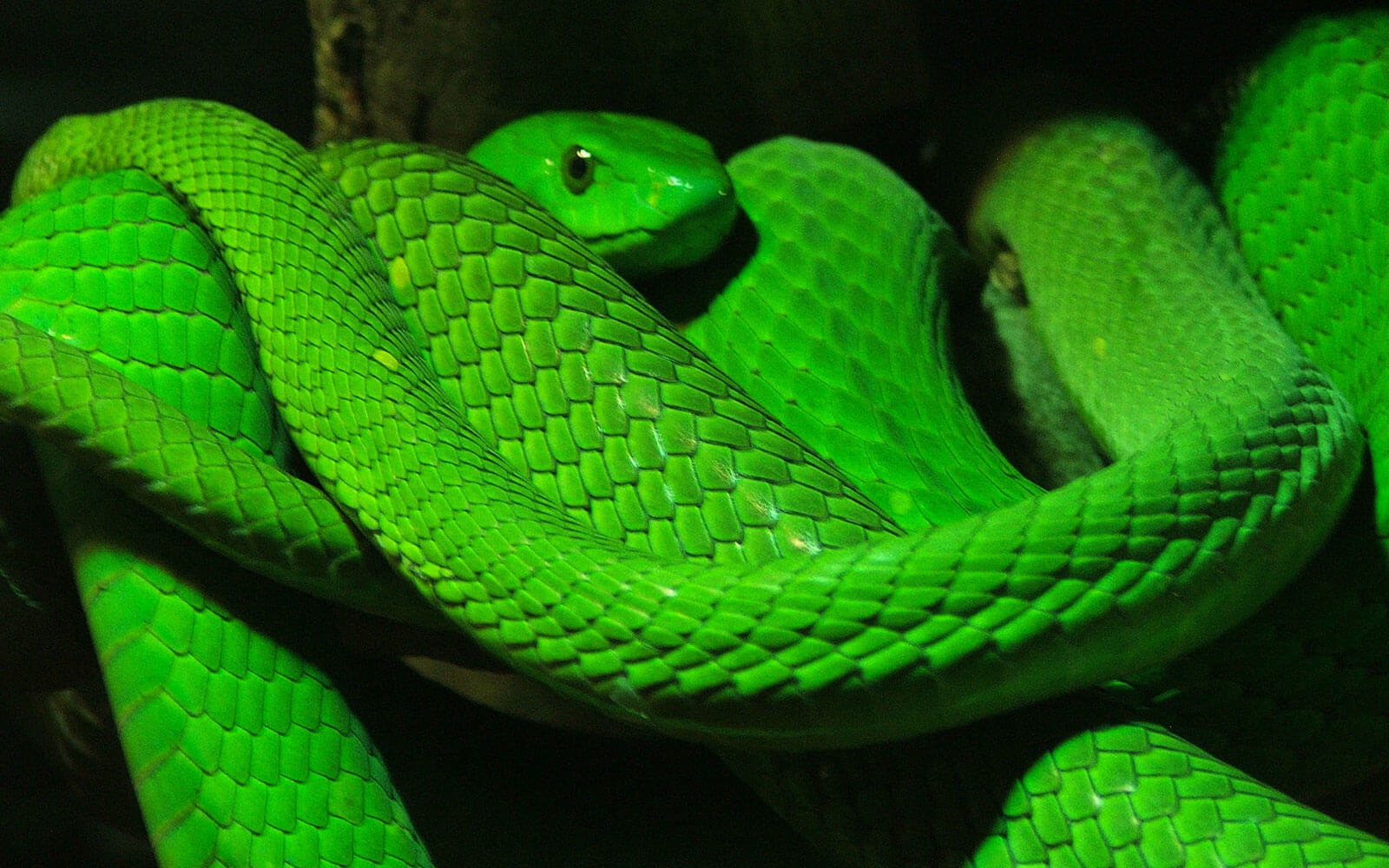
Green Mamba. Venomous. Coastal. Arboreal. Eats mainly birds, which eat insects.
Despite the occasionally, and not necessarily factual, reported sightings of Green Mambas well outside of their known distribution range in the Kloof/Upper Highway area, I battled to find any credible information on rare or endangered species occurring in our Kloof Conservancy area. There’s certainly no reason there couldn’t be any, and there might even be some that are as yet still to be discovered.
The internet allows us to share our personally recorded information on the continually updated websites – e.g. the International Union for Conservation of Nature (iucn.org).
In the light of the ever-growing interest being shown in the environmentally critical and essential snake (apart from that generated by social media sensationalism), it would certainly do no harm to photograph and record any sightings of unusual snakes we come across and forward them for identification, thus adding to the already available knowledge of our flora and fauna. Who knows, we could be recording a rare or potentially endangered species, even a new one.
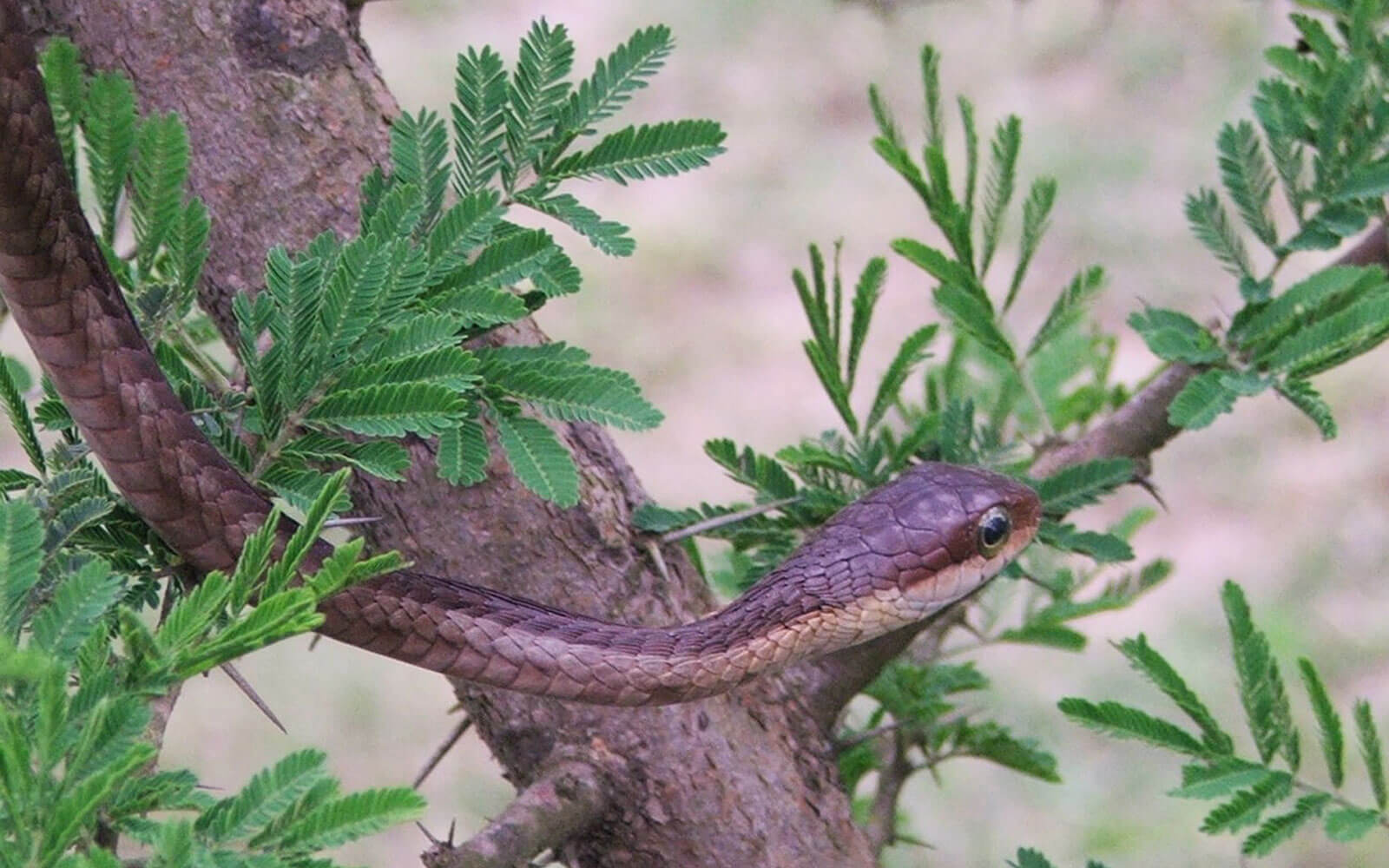
Female Boomslang. Venomous. Arboreal. Eats creatures that eat insects.
Fear is a controlling element. We need to open our minds and confront it.
As snakes have never been ‘flavour of the month’ for humans, the dearth of new information has certainly made it difficult for researchers to accumulate credible statistics on the subject. This made it difficult to determine as to whether any species anywhere were endangered, or had in fact, become extinct.
As an aside to the above comment, I’d encourage those of you who might be interested, to read up on some of the flora and fauna that emerged from the vaults of ‘extinction’ in Russia’s Chernobyl, many years after the 1986 disaster. A number of animals and plants that were thought to be extinct, emerged from the growing forests where they had been living all along, unbeknown to the previous inhabitants who had essentially ruined their environment with poor farming methods.
I frequently meet up with ‘indigenous gardeners’, and if I ask, “have you seen any snakes on your piece of paradise recently?” I often receive a pretty standard, “no, we don’t encourage them”, or variations on that theme. This merely confirms for me, that either an implanted fear still overwhelms any potential meaningful thought, or alternatively, they’ve had an unfortunate experience previously, perhaps having been bitten or had an over-inquisitive pet bitten, spat at, or killed by a snake.
We need to come to terms with the realities and move on. If not, we’ll never be able to add our experiences to the vital knowledge pool that drives our environmental management. We must thank those who have become involved in ongoing research projects that are beginning to fill in some of the gaps, why not join them?
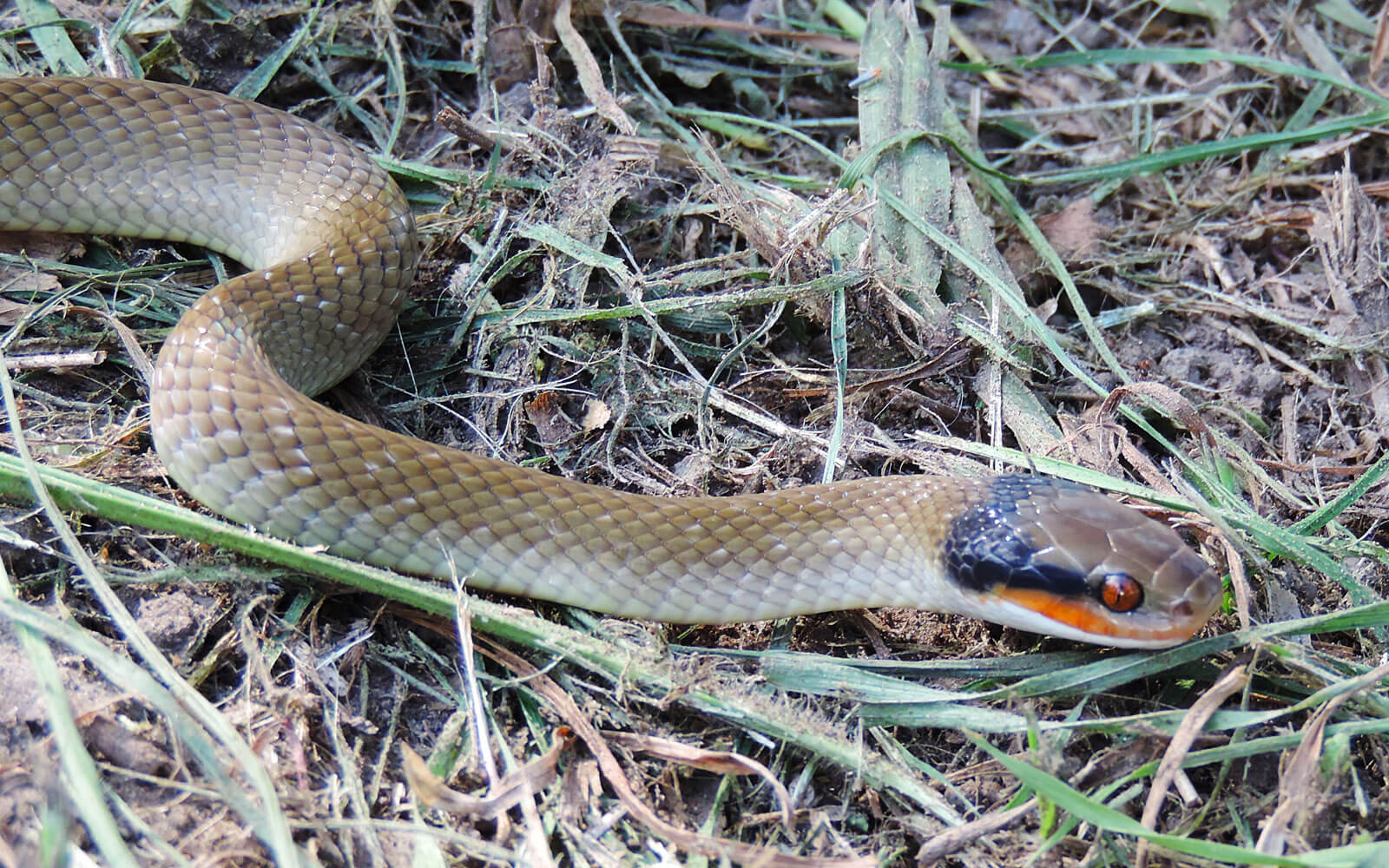
Herald. Venomous. Forager. Eats creatures that eat insects.
Our slow and unthinking bumble into the 21st Century.
In the early 60’s a snake was a snake, end of story. You were either interested in them, or you were terrified of them. One thing was a certainty, there was no thought whatsoever, given by me, my parents, or peers, to the possibility that at some stage in our lives, some species could become threatened, rare or endangered. That unlikely scenario has potentially become a reality in our lifetimes.
In the pre-rinderpest days of removing and relocating snakes from people’s houses, gardens, vehicles etc. snake catchers would respond to the calls, remove a snake and do the necessary – which was either to sell it to the snake park, or, to release it (unbeknown to the homeowner) back into the bush as they drove off and waved goodbye. The chances of seeing the snake again were probably about 1 in 50,000.
At no point initially did I think of recording species details for further research purposes, and I wasn’t alone in this omission. It was only years later, that I began to take a long-term interest in the animal and started recording my releases. In my experience, most of the earlier available publications on snakes of Southern Africa seemed to concentrate on the better-known species at the time, and even then, it was usually the commonly encountered ones – the Mambas, Cobras, House snakes, and Puff adders – many of which were also often confused by casual observers with other commonly encountered species, merely adding to whatever misinformation was already in the public domain.
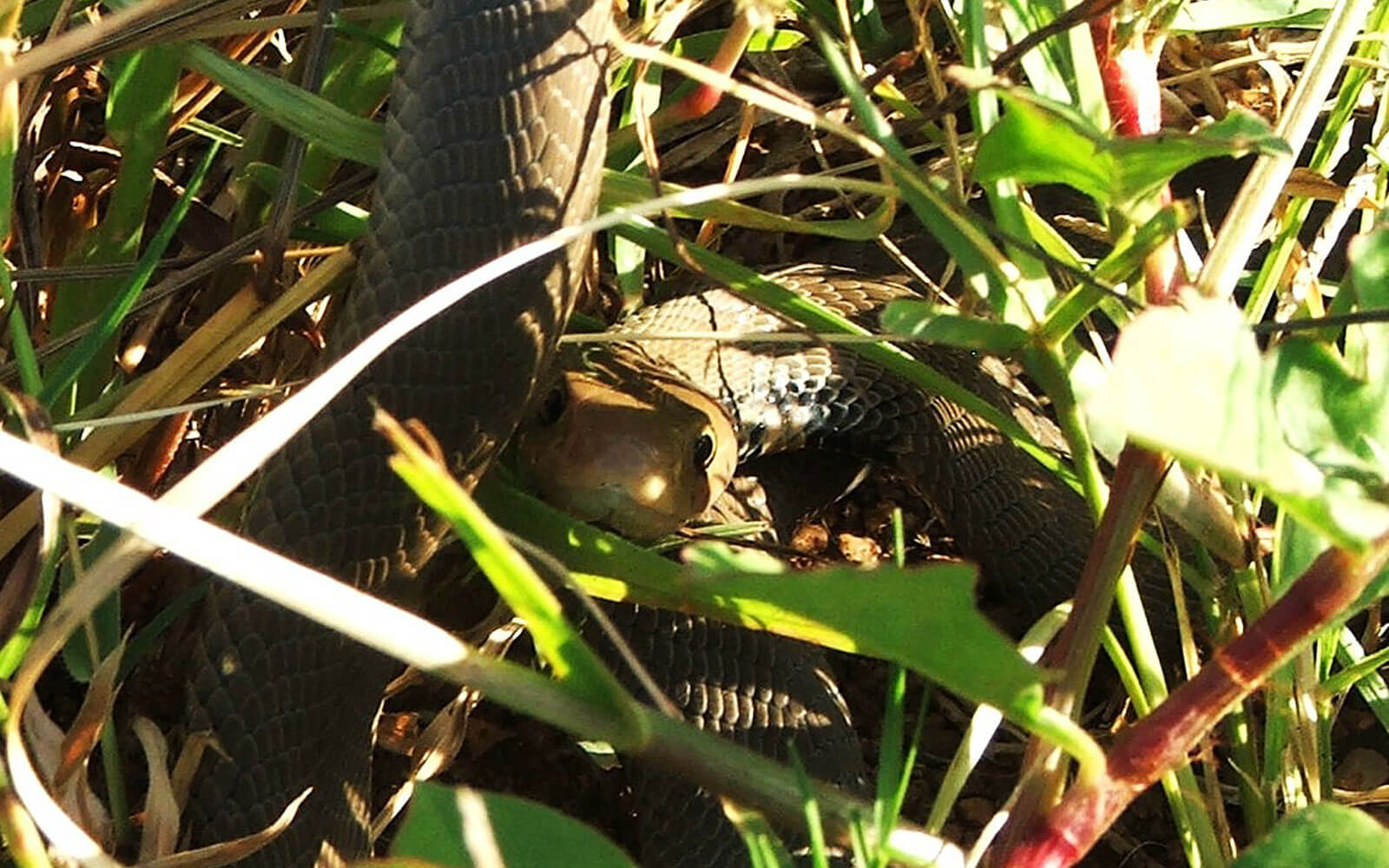
Mozambique Cobra. Venomous. Forager. Eats creatures that eat insects.
The VF FitzSimons – Snakes of Southern Africa 1962 edition – notes the existence of 135 species, of which about 25 were considered dangerous to man. In the 1980 update of Snakes of Southern Africa, we read of around 160 species with 25 dangerous ones. From about 2000 onwards, publications started listing around 170 species, still with the 25 potentially dangerous to man. The chances of another 35 species having been ‘discovered’ over the 60 years following the 1962 records I referenced, seem unlikely to me. Even though there will have been a few genuine new species discoveries, there were undoubtedly some species re-allocations with known species as a result of fine taxonomical difference discoveries over those years, accounting for many of the ‘new’ species. There are now more dedicated researchers worldwide, who are involved in projects that are helping to monitor the species diversity on the various continents, hopefully making it easier for us to determine the possibility or otherwise, of impending specific species losses.
I mentioned in one of my previous articles, that in those pre 1950 days, snake corpses or skins posted to museums for identification, would have been recorded to have originated from the area from where they were posted, not discovered, thereby perpetuating some of the misinformation on species distribution.
Reference to some of those early species distribution records might be the reason that some of us, me included, still believe that certain species, Mole snakes for example, although with commonly published country-wide distribution ranges, are in fact, not found country-wide, and probably never were. I sometimes meet up with people (often birders) who have seen extremely rare specimens in most unusual habitats but have no backup or actual evidence of their sighting. If we weren’t there during the momentous sighting, we can’t dispute their finding. In the early days, the sighting might have been recorded as factual.
Fortunately, this is changing, with more dedicated scientists et.al becoming involved in this worldwide research, giving us a better understanding of the actuality of species diversity – potentially more distressing than we imagined. There are many factors influencing our entire biological species diversity, throughout the range of whatever lives and dies on the planet.
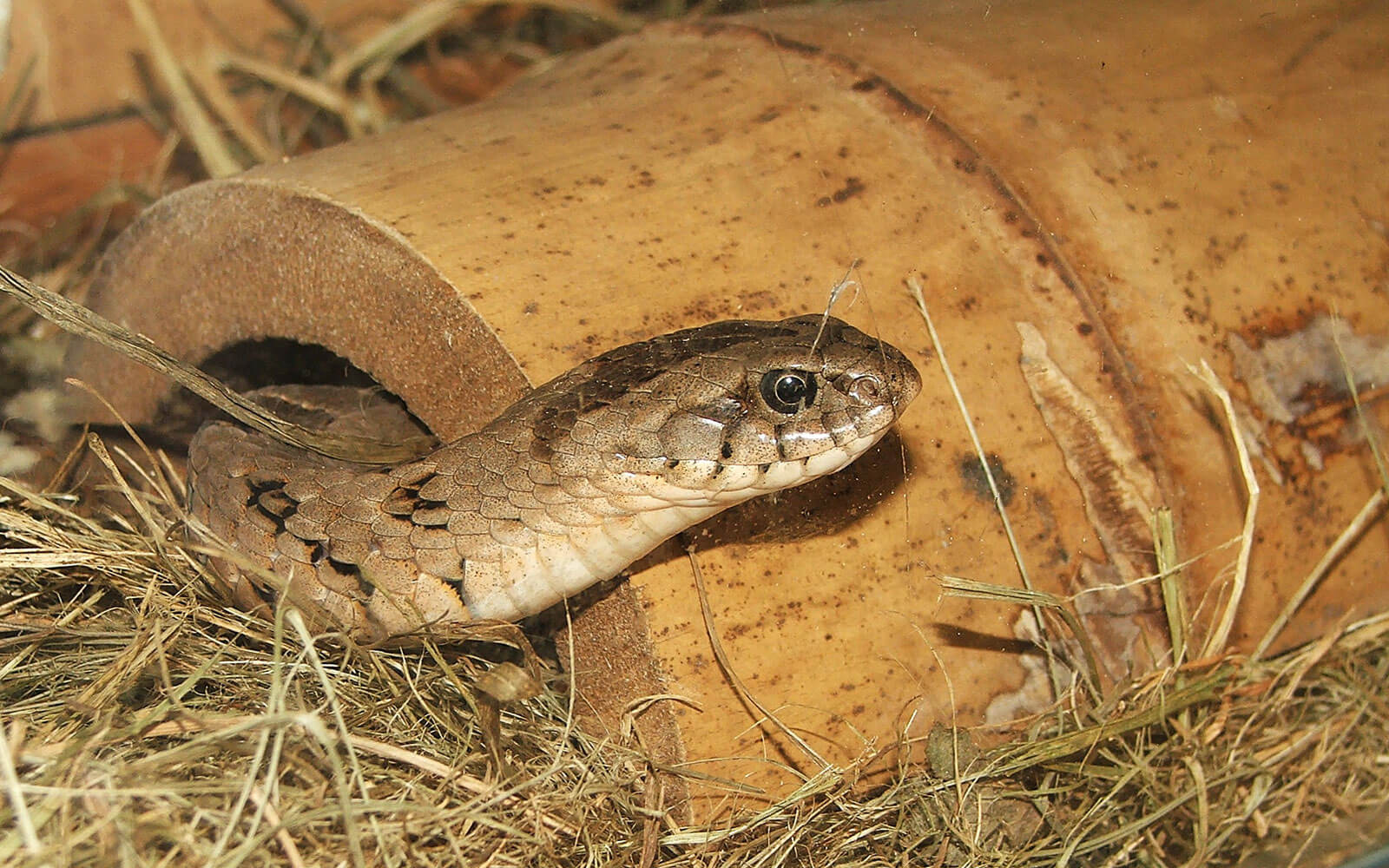
Night adder. Venomous. Forager. Eats creatures that eat insects.
Where to from here?
This might sound alarmist, but for me, it’s a storm coming.
The almost endless list of factors driving the storm, whether pertinent or not, includes some commonly touted ones; climate change (a hotly debated subject), habitat destruction (Hom sap?), the release of non-endemic (or alien) species that negatively impact upon indigenous species (same culprit), and our seemingly unchecked population growth (ditto). What is not debatable, is that we’re not helping to address the problem by ignoring its reality.
The evidence is there, the time has come for us to accept the reality and do something about it – before it’s too late. Pointing out undeniable indicators, for example – the dramatically reduced insect activity and the devastating consequences throughout our environment – might be a good place to start.
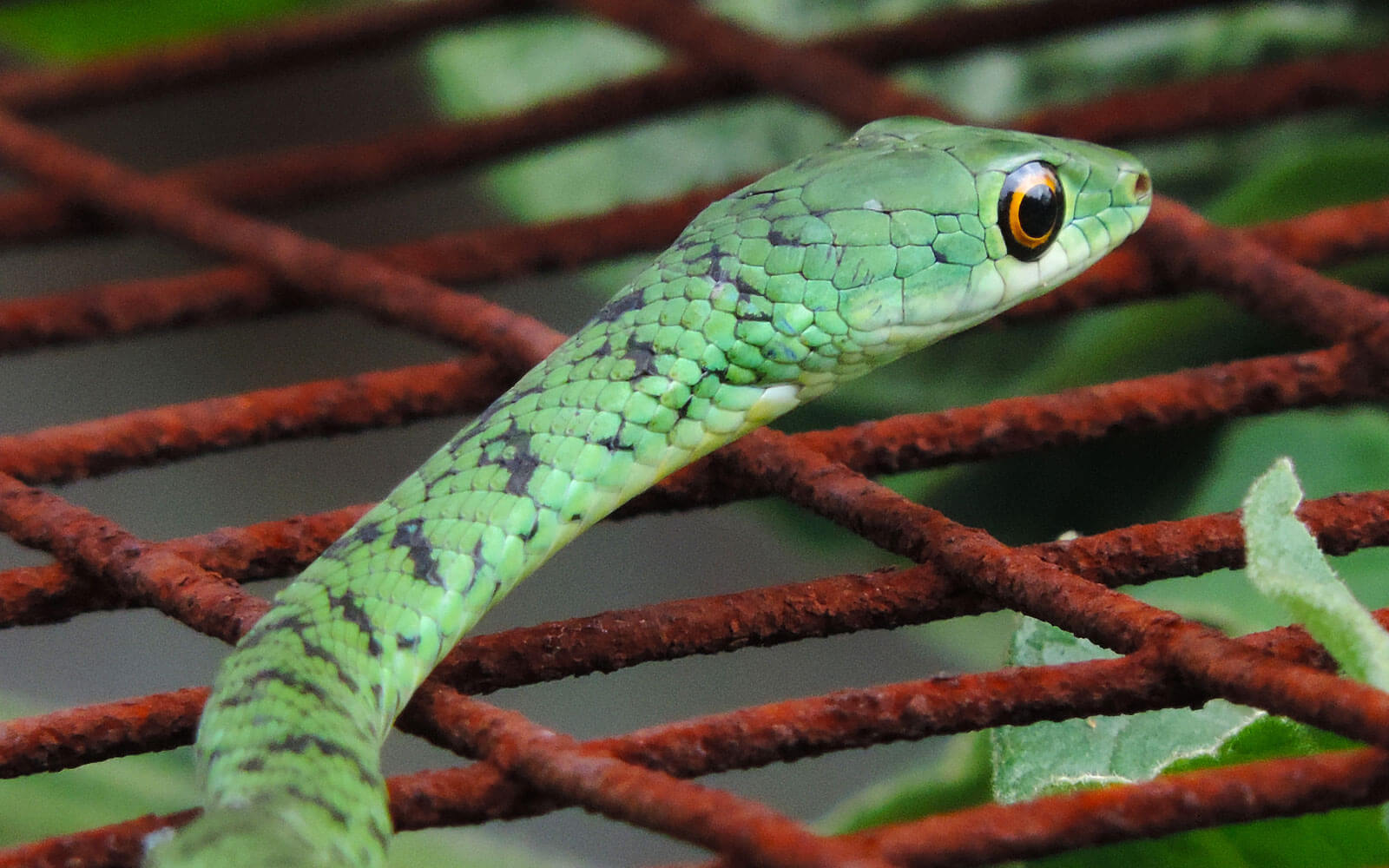
Spotted Bush snake. Non-venomous. Arboreal forager. Eats creatures that eat insects.

About the author
Pat was born in the UK, educated and brought up in Rhodesia/Zimbabwe, and came to South Africa in 1983. He developed an early interest in the study of the behavioural aspects of insects and animals, rather than the deeper scientific side, and he’s worked with snakes for most of his life. Pat conducts educational walks and talks throughout SA and into neighbouring countries where snakes are grossly misunderstood and needlessly killed. He writes articles for a number of publications, and has written the book ‘Getting to Know the Neighbours’, which is all about understanding snake behaviour and is aimed at teaching others how to come to terms with them.
Pat can be contacted at: herpet@snakecountrycc.co.za.